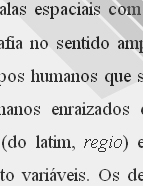

................................
The expansion of regional and local studies in the 19th century justified the compilation of bibliographies on the subject. Thus, in 1900, for the Universal Exhibition in Paris, Brito Aranha published the first bibliography of Portuguese works that could be used to study the cities, towns, monuments, institutions, traditions and customs, etc., of mainland Portugal, the Azores and Madeira, and the overseas possessions. Eduardo da Rocha Dias continued this work in later years (1903-06, 1908) and the National Library official, António Mesquita de Figueiredo, produced a more complete work in 1933. However, both were limited to the territory of mainland Portugal. At the local level, the Bibliotheca Açoriana , published by the tireless Ernesto do Canto in 1890, stands out, including national and foreign works concerning the Azores islands. On the other hand, the first reflections on methodologies and the more systematic organisation of regional and local studies also appeared. In 1913, Manuel da Silva, in the Revista de História , presented the Schema d’historia local , an approach that covered various aspects: geology, physical anthropology and the study of populations, archaeology, ethnography, legislation and local administration, statistics, philology, traditional literature, local memories and news, documents and archives, and finally monuments and art. The ideal pursued is that of very comprehensive studies that could be classified as global, were it not for the fact that they are actually fragmentary studies, where materials of various kinds are collected without a theoretical framework that allows for their integration in comprehensive terms. More than a decade later, in 1925, P. M. Laranjo Coelho presented his analysis of the advantages of studying local monographs for understanding general Portuguese history at a Portuguese-Spanish congress and encouraged scholars to develop this type of research. He outlined a brief roadmap for the development of this type of work in Portugal and proposed his own plan, which should cover “the essential facts for the study of a locality in its geophysical, historical, economic and social aspects” (Op. cit., pp. 17-20). We find in it the same global ambition, now with a more elaborate systematisation and development. Geography, demography, ethnography, archaeology and history, in their various economic, political-administrative, artistic and cultural dimensions, combine to provide a general picture of regions and localities. In 1934, in a series of lectures given at the Academy of Sciences, he returned to the same subject, showing that he was aware of what was being done in France in this field ( Monografias Locais na Literatura Histórica Portuguesa , 1935).
This work is financed by national funds through FCT - Foundation for Science and Technology, I.P, in the scope of the projects UIDB/04311/2020 and UIDP/04311/2020.
